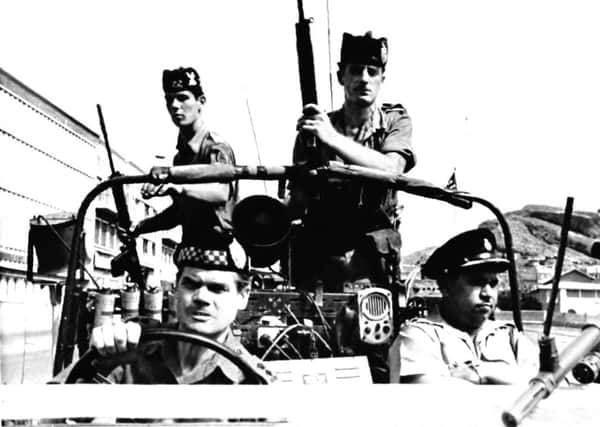Book review: Mad Mitch’s Tribal Law: Aden and the End of Empire


Mad Mitch’s Tribal Law: Aden and the End of Empire
Aaron Edwards
Mainstream, 336pp, £20
As they had linked up with terrorists, the British initially concluded that retaking Crater would result in a bloodbath – and was pointless anyway as Britain had already decided to withdraw from Aden. Lt Col Colin Mitchell, the energetic commander of the Argyll and Sutherland Highlanders, who had just arrived there, had other ideas.
A fortnight later, the Argylls re-entered Crater to the skirl of the bagpipes. The next few months would see the jocks impose their own brand of Argyll “Tribal Law” over the local population – earning Mitchell the nickname ‘Mad Mitch’ and his men a place in the hearts of the British public and, indeed, a place in Scottish military history.
Advertisement
Hide AdSurprisingly, all of this is almost ignored by historians. Although “Mad Mitch” is occasionally mentioned in books on Britain’s imperial endgame in Aden, Aaron Edwards’s new study is the first to place the Argylls’ story centre stage. Edwards seeks to find out why the British Empire crumbled so rapidly by examining what happened in Aden and rescuing from obscurity the contributions of those who were involved. He also analyses the foundations of the “Mad Mitch” legend and charts Mitchell’s own evolving relationship with his media persona.
This book is not merely a much needed study of “Argyll Law”. It also seeks to place the “Mad Mitch” story within the wider context of events in Aden, covering important milestones such as the assassination attempt on British High Commissioner Sir Kennedy Trevaskis at Khormaksar Airport in 1963, Britain’s punitive campaign against rebellious Arab tribes in the Radfan mountains around 1964 and the escalating violence in settlements such as Crater, Sheikh Othman and Tawahi as the 1960s progressed.
Edwards also combines Mitchell’s exploits in Crater with the wider political situation, as colonial officials worked tirelessly to establish a viable successor state favourable to British interests, before the project crumbled in the face of the Arab terrorist/freedom fighter onslaught. In many ways, therefore, it is the story not only of the commander who attempted to maintain British prestige at a time of decline, but also a tale of betrayal and failure in the final days of British imperialism.
The real strength of this book lies in the vast array of new evidence collected for the first time. Through painstaking research, Edwards has pooled together many interviews with the veterans, and their relatives. We are presented with the views not only of military personnel, but also of colonial administrators, journalists and our former Arab allies, from the ruling sheikhs to soldiers who fought alongside the British. In addition to this is a considerable quantity of previously restricted archival evidence which sheds new light on Mitchell’s operations and his tense relationship with his military and civil superiors, whose intstructions to “probe” Crater he interpreted as licence to launch a full-scale re-occupation.
The exploits of the Argylls in Crater have been the subject of much controversy over the years. Allegations of indiscipline and atrocities have resurfaced time and time again. Edwards deals with these in a fair, impartial and intelligent way, and one which reflects relatively favourably on the Argylls and their commanding officer.
Edwards’s depth of research gives the reader a strong sense of the human element of the conflict. This is particularly the case regarding Mitchell himself, who is depicted as a much more complex individual than previously recognised by historians. Looking at his relationships with friends and family to his gradual evolution into a fully-fledged humanitarian in the 1990s, leading the HALO Trust in its de-mining efforts across the world, Edwards successfully provides a more three-dimensional view of the man behind the legend. There is, as journalist John Torode pointed out in his obituary of Mitchell in 1996, a paradox of sorts that he had “spent most of his life looking for a cause and, perghaps surprisingly, he found it late in life in quiet and unflamboyant work in the Third World.”
Advertisement
Hide AdMad Mitch’s Tribal Law makes one realise how recently Britain scurried away from its imperial role and shows what kind of men were tasked with implementing a retreat from imperial power – a breed of soldier and diplomat who are now extinct. It is the story of a family regiment, the Argyll and Sutherland Highlanders, in the twilight of empire – bagpipes, glengarries and all. It is a book for anyone interested in the history of imperialism, of Scotland and of a regiment engaged in its own war on terror.